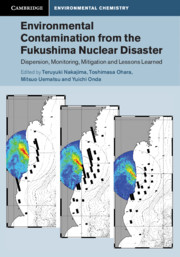 Environmental Contamination from the Fukushima Nuclear Disaster
Environmental Contamination from the Fukushima Nuclear Disaster from Part III - Lessons and Future Issues from the Fukushima Accident
Published online by Cambridge University Press: 16 August 2019
There has been much reflection on the issue of access to and sharing of data and information among the different agencies involved in emergency response both in the country where an accident happened and among third-party countries. A universal data exchange format has been proposed by the International Atomic Energy Agency (IAEA) as a result (IRIX Steering Committee, 2013). The creation at the start of an emergency of a database containing exhaustive entries for all measurements (e.g. location of measuring devices, measuring device types, measurement errors, producers) would facilitate the work of the different bodies while removing the burden of communication from the affected country. A public database of this kind would also improve transparency in relation to the public. In France, for example, a shared database is currently being created. The same logic could also be applied to meteorological observations, to the parameters defining the state of the facility and even to the outcomes of expert assessments.
To save this book to your Kindle, first ensure no-reply@cambridge.org is added to your Approved Personal Document E-mail List under your Personal Document Settings on the Manage Your Content and Devices page of your Amazon account. Then enter the ‘name’ part of your Kindle email address below. Find out more about saving to your Kindle.
Note you can select to save to either the @free.kindle.com or @kindle.com variations. ‘@free.kindle.com’ emails are free but can only be saved to your device when it is connected to wi-fi. ‘@kindle.com’ emails can be delivered even when you are not connected to wi-fi, but note that service fees apply.
Find out more about the Kindle Personal Document Service.
To save content items to your account, please confirm that you agree to abide by our usage policies. If this is the first time you use this feature, you will be asked to authorise Cambridge Core to connect with your account. Find out more about saving content to Dropbox.
To save content items to your account, please confirm that you agree to abide by our usage policies. If this is the first time you use this feature, you will be asked to authorise Cambridge Core to connect with your account. Find out more about saving content to Google Drive.